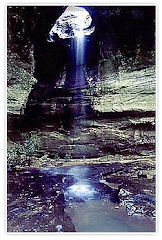
Isan has a number of important Bronze Age sites, with cliff paintings, artifacts and early evidence of rice cultivation. Iron and tools, such as found at Ban Chiang, may predate similar tools from Mesopotamia. The region later came under the influence first of the Dvaravati culture and then of the Khmer empire, which left temples at Phimai and Phanom Rung.
After the Khmer empire began to decline from the 13th century, Isan was dominated by the Lao Lan Xang kingdom, that had been established by Fa Ngum. Thereafter the region was increasingly settled by Lao and Thai migrants. Siam held sway from the 17 th century, and carried out forced population transfers from Laos to Isan in the 18th and 19th centuries. Franco-Siamese treaties of 1893 and 1904 made Isan the frontier between Siam and French Indochina.
In the 20th century a policy of "Thaification" promoted the incorporation of Isan as an integral part of Thailand and de-emphasised the Lao origins of the population. This policy extended to the use of the name "Isan" itself: the name is derived from that of Iśāna (Sanskrit: ईशान), a manifestation of Shiva as deity of the northeast, and the Sanskrit word for northeast. The name therefore reinforces the area's identity as the northeast of Thailand, rather than as a part of the Lao world. Before the central government forcibly introduced the Thai alphabet and language in schools, the people of Isan wrote in the Lao alphabet. Most Isan people still speak the Isan language which is closely related to the Lao language.
After the Khmer empire began to decline from the 13th century, Isan was dominated by the Lao Lan Xang kingdom, that had been established by Fa Ngum. Thereafter the region was increasingly settled by Lao and Thai migrants. Siam held sway from the 17 th century, and carried out forced population transfers from Laos to Isan in the 18th and 19th centuries. Franco-Siamese treaties of 1893 and 1904 made Isan the frontier between Siam and French Indochina.
In the 20th century a policy of "Thaification" promoted the incorporation of Isan as an integral part of Thailand and de-emphasised the Lao origins of the population. This policy extended to the use of the name "Isan" itself: the name is derived from that of Iśāna (Sanskrit: ईशान), a manifestation of Shiva as deity of the northeast, and the Sanskrit word for northeast. The name therefore reinforces the area's identity as the northeast of Thailand, rather than as a part of the Lao world. Before the central government forcibly introduced the Thai alphabet and language in schools, the people of Isan wrote in the Lao alphabet. Most Isan people still speak the Isan language which is closely related to the Lao language.









ไม่มีความคิดเห็น:
แสดงความคิดเห็น